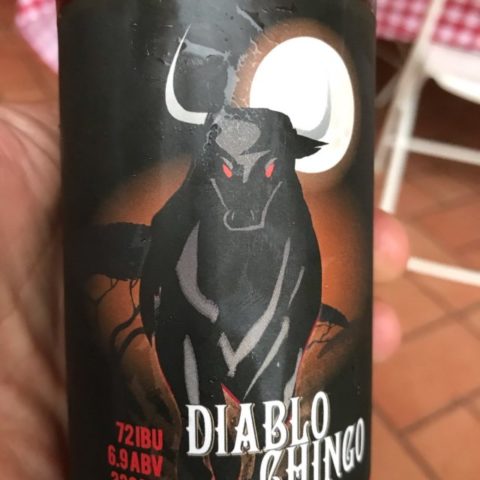
“El Diablo Chingo” (the Chingo Devil), also called Chingo Negro, is a character from a Costa Rican folk legend, native to the province of Guanacaste.
It is a large black bull with a “chingo” tail, that is to say, without a tail or a very short one, with fierce bloodshot eyes that shone like embers, and with a large “paileta” antler that frightened the plain lands at night hiding between the donkeys of the mountain.
Origin of the folk legend.
According to the Nicoyan researcher and writer Carlos Arauz, the legend of the Diablo Chingo appeared at the time of the Spanish colonization of Guanacaste, during the time after the first herds of bovine cattle arrived in the year 1560, brought by Juan de Cavallón and Arboleda, the first conqueror of Costa Rica.
The first haciendas in Guanacaste appeared in the colony between 1600 and 1770, so it is estimated that in this period the tradition of the Diablo Chingo appeared, a product of the imagery of the sabaneros – a kind of cowboy from the Guanacaste plains – and also from people who lived in the towns, which were part in many cases of the same cattle ranches.
The most famous legend about the Diablo Chingo narrates that this ghost appeared in one of the oldest haciendas in Guanacaste, scaring away the cattle. One Good Friday, very early in the morning, the ranch boss of the hacienda, a despotic man and without religious scruples, forced the sabaneros to collect the cattle, disrespecting the festivity. The men, very religious, at first resisted, even more, because of the legend that narrated the appearance of a ghostly bull believed to be the Devil itself, but they still had to obey the order.

Almost towards the end of the afternoon, when all the cattle were gathered, an immense black bull with red eyes like embers appeared scratching the ground in defiance. The sabaneros were frightened, but the boss ordered them to launch the beast and incorporate it into the herd.
There was, however, no way to encircle or lasso it, which angered the boss, who, shouting insults at his men, threw himself at the bull, vowing that he would either die or spend the rest of eternity chasing the Chingo Negro, In this way, he threw himself, horse and his sheepdog at the bull, which immediately ran across the plains. The rest of the sabaneros returned to the hacienda. In vain, they waited all night for the return of the boss, who never returned.
Since then, in the Guanacaste plains, they tell that at three o’clock every Good Friday, two shadows can be seen passing one after the other, and the cry of a sabanero herding cattle, and at the distance a dog barking and the roar of a bull.
Legend has it that it is the soul of the hacienda boss who carries out the divine punishment, eternally chasing the Diablo Chingo without ever being able to reach him.
A Variant.
Another Guanacaste legend is related to the Diablo Chingo. The legend of the ghost of the savanna tells of a sabanero named Ramón Luna, who died trying to lasso an enormous cimarrón bull called «El Escorpión», who attacked and killed him. Since then, the ghost of Ramón Luna – known as the ghost of the savanna – appears as a shadow on the haciendas, scaring away the bulls. In this version of the legend, typical of the Liberia region, only the ghost of the sabanero appears, not the ghost of the bull.

